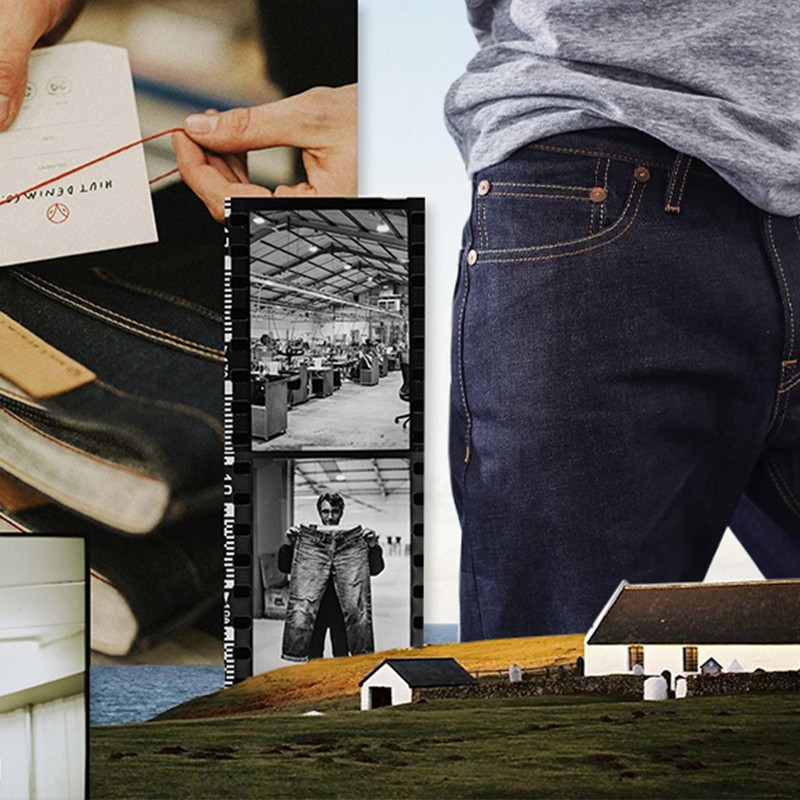Success Story: Hiut Denim
David, Let’s start from the top – did you always plan to own a jeans brand?
I was always fascinated by brands and dreamt that one day I would have my own. Pre-Hiut, my wife and I started the clothing brand Howies, but we were pretty inexperienced at running a business. We thought fast growth was this really amazing thing, but actually it was killing us. We ended up selling Howies in 2006 after it grabbed the attention of some seriously professional brand builders. Steve Case, who started AOL, wanted to invest but take it to California. PPR – which owned Gucci, Saint Laurent and Puma – made a list of two brands in the world it wanted to buy: one was Quiksilver; the other was Howies. Japan’s richest guy was interested too but in the end, we sold to Timberland as it believed Wales was important to the brand’s integrity and we shared that point of view. It’s still a shame though, because if we’d slowed the growth of the business down, we would’ve kept control and I’m pretty sure we’d still be doing Howies today.
Were there other lessons you learnt from Howies?
There were many, many lessons we learnt from Howies. Starting and running that business was like an MBA without having to go to any classes. Once we’d sold Howies, we weren’t allowed to start a new brand for a year, which gave us plenty of time to reflect on our next move. We knew we wanted a small group of shareholders for our new company because we wanted the guidance and the experience that a group could bring – people who had been there and done it. Looking back, the decision to take on investors was one of the best things we’ve done at Hiut. Not so much for the money, but for the advice.
From Howies, we also knew how to build a global brand without a marketing budget. We learnt the importance of telling our story. We knew how to build a successful team and understood that a happy team builds a great business. Above all, though, we learnt how to be profitable while maintaining slow growth.
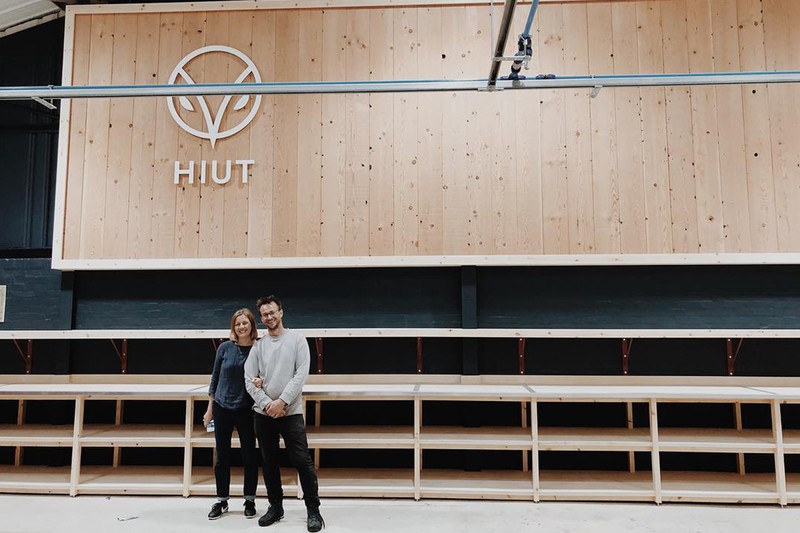
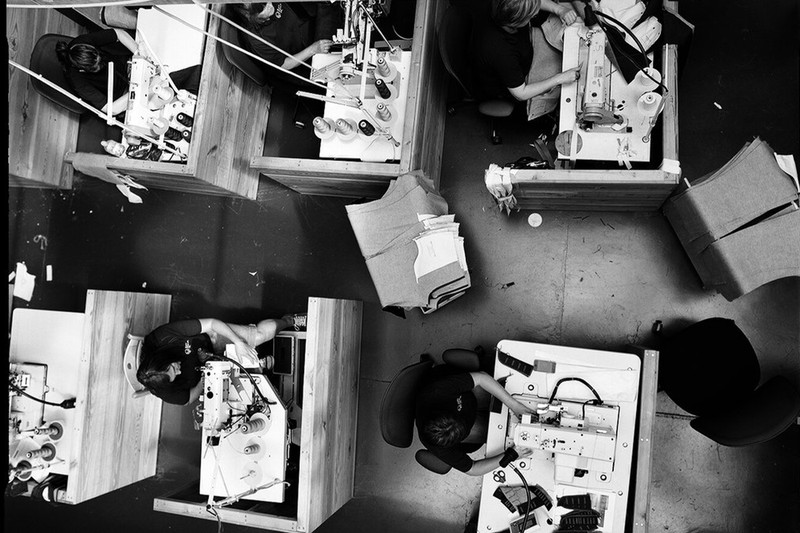
Where did the idea for Hiut come from?
When the jeans factory in Cardigan closed, there were 400 world-class makers who had nothing to make. We were brand builders looking for a new project and the internet had just changed the business playing field. We could be a direct-to-consumer brand with no middle man, meaning we could afford to make something of high quality with high skill and still be a business.
Hiut still makes just one product… Why choose jeans?
I fell in love with denim and the history of the fabric when we were doing Howies. Just like coffee is really, really geeky, so is denim. There are some really great selvedge fabric mills in Japan, which are the elite. We begged them to work with us when we were starting out and my obsession began from there. Everything about the process – from plantation denim to the original selvedge narrow looms and visiting denim factories – is just a brilliant experience for me.
When we launched Howies, there weren’t many other UK brands bringing manufacturing back to the UK. We were certainly the first denim brand to go and start a factory. When we started Hiut, the premium denim market was pretty healthy, but the rise of direct-to-consumer brands wasn’t really a thing. We were early with that idea, but we were right: direct-to-consumer is all about craft and quality, so the customer wins – and it makes a good story.
Would you ever make anything else?
Hiut is only ever going to make jeans because it has the knowledge, the skill and 40 years of learning behind it. We are confident on how to do one thing well and we have no ambition to do anything other than that. We’re a singular product company selling direct to the consumer and that product is super-high-premium-quality jeans. That's our complete and utter focus. Anything else is a distraction.
Was there a business plan?
Yeah, we spent six months doing business plans butso you know I hate business plans. I hated every minute of that six months because we had to go down to the post office and find out minute details like how much it was going to cost us to send out a pair of jeans. But, as painful as it was, knowing your numbers is really important. When you don’t know your numbers, you’re going to have to raise more and more money. It can be the difference between failure and success.
Who did you turn to for advice in those early days?
Starting a factory is a complex, pain-in-the-arse type of thing – that’s why most brands don’t do it. So the people we really took advice from were the people running the old factory. They helped us set up, told us what to do, what not to do. We were novices and naïve; they were skilled and had done it for decades.
What’s it like running a business with your wife?
Well, we’ve worked it out. We’ve been married 26 years and we’ve learnt each other’s strengths. I’ve learnt to listen and I am lucky to work with her. I’m more responsible for building the brand side; Clare’s responsibility lies more with building the business side. She makes sure we stay in business and I make sure we stay relevant.
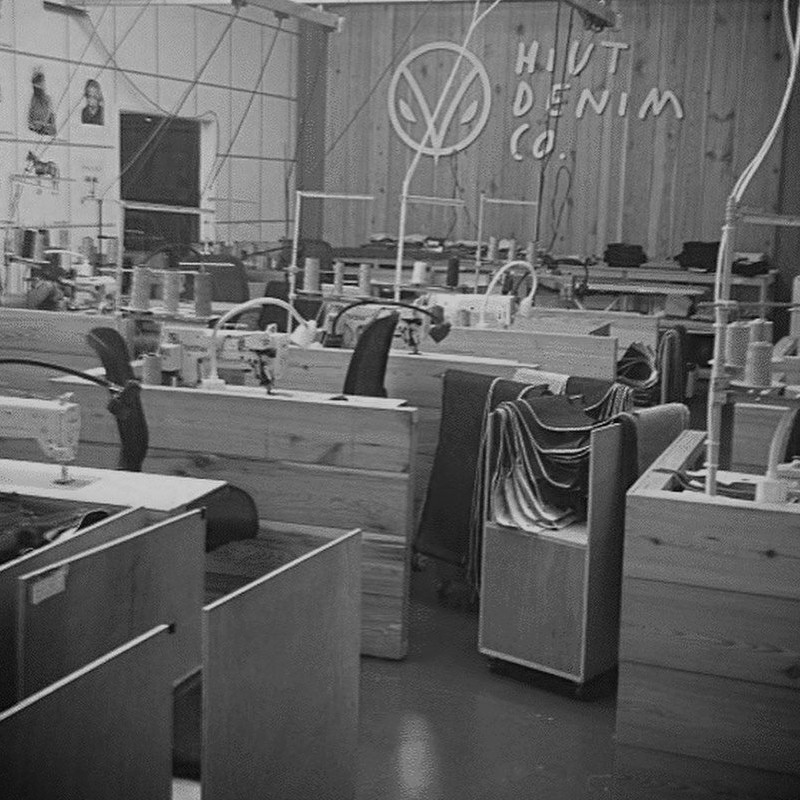
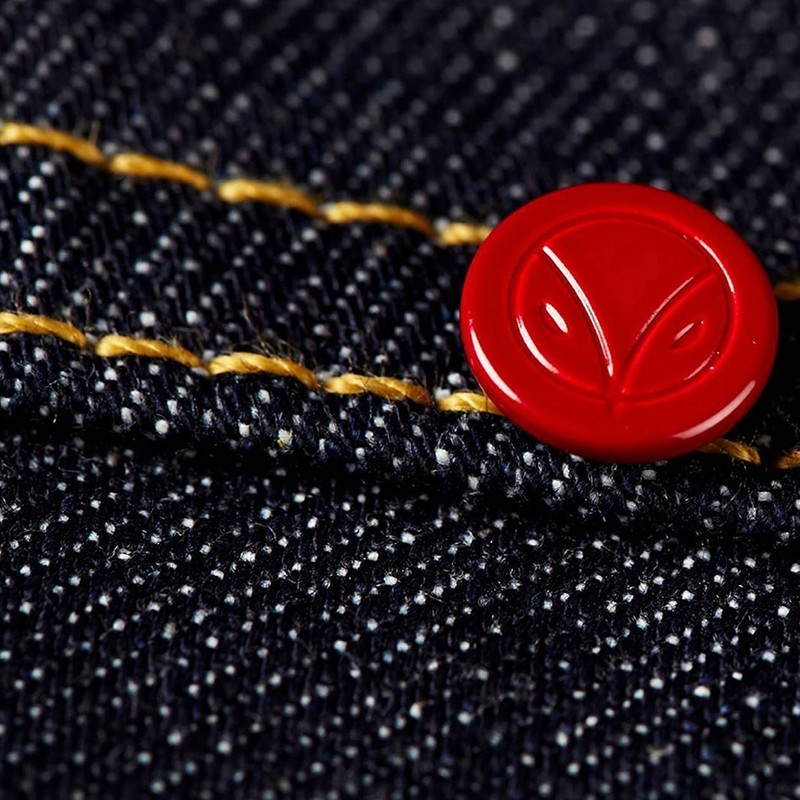
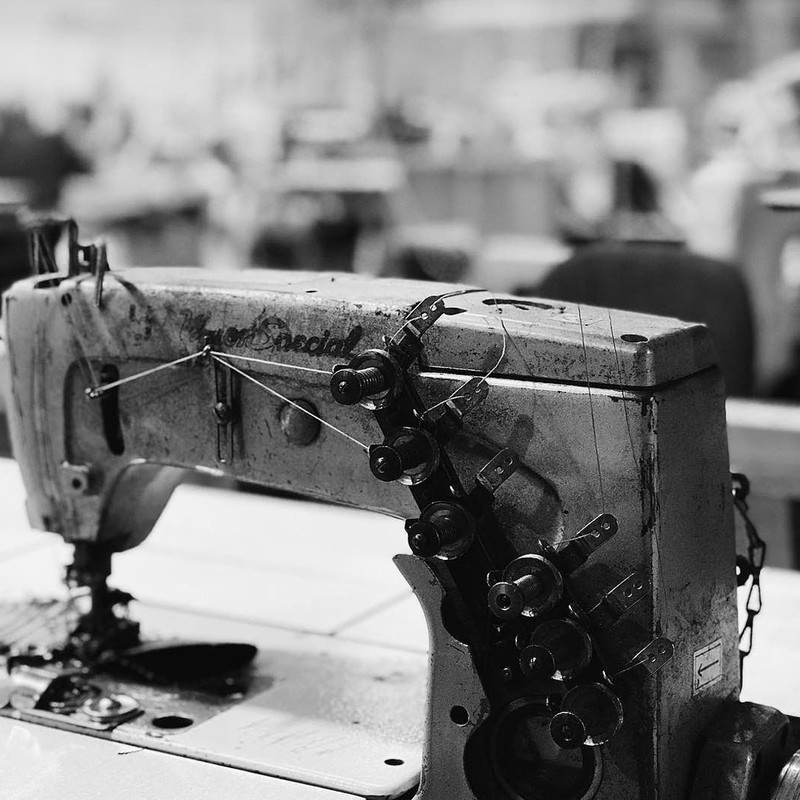
On the brand side, where do the name and the logo come from?
Hiut comes from the first two letters of our surname and the first two letters of the word utility. Our logo comes from the fact we did the business plan in the chicken shed on our farm – because we had no factory then. Every night, when we would leave the chicken shed to go home, there was a barn owl in the next building watching us. I told the designer about the farm and gave him the brief that the logo had to fit on a rivet. A week later, he sent me the owl logo on a rivet and I said, “Perfect.”
Talk us through the first few months of Hiut...
Clare and I had moved to Wales to run Howies, so we had already created our life in Cardigan. But the first few months of Hiut were tricky because starting a factory is not easy. You have to go find all the sewing machines and cutting tables. There was an awful lot of Googling, then we had to get these machines working and the factory flowing. But then we launched and sold six months’ worth of jeans in one month. We had a brilliant launch, but it was a stressful one because we couldn't make enough jeans. Nice problems have to be solved too!
How have you coped with the demand since then?
If we sell out, people have to wait. Sometimes they’ve had to wait six months. I don’t want people to wait six months for a pair of jeans – that’s excessive – but sometimes you can’t keep up with demand and that’s just the way it is. You can't suddenly go and hire 20 more people because you have a sales spike.
How did you get the press to listen?
We were telling a new story in as much as we were the first denim brand in the UK to have its own factory. We were also bringing manufacturing back home, which was rare. We also had a story about a town. We wanted the town to make jeans again, and lots of people loved that we were trying. Even if the odds were against us – so there was also a David versus Goliath story, which is always a good story.
What else has helped you to grow?
Publicity has really driven growth: Arctic Monkeys are fans of our product and we had Meghan Markle wear the jeans when she visited Wales – that was obviously a big, big moment for us. When you have some of the most famous people on the planet wearing your jeans, the marketing budget doesn’t have to be so large. Don’t underestimate the power that word of mouth has. If you make a great product, you will tell your friends about it. Then there’s social media. Back when we started, Instagram and Facebook were much cheaper, so we used them a lot. They’re more expensive now, so it’s a bit harder to really go and grow through that, but they’re still very, very powerful tools. They’re century defining, in fact.
Now talk to us about the Scrapbook Chronicles…
Scrapbook Chronicles is our newsletter. It is, without a doubt, our number-one sales tool. It is how we have managed to grow our business; we are super respectful of that, so we put an awful lot of time and effort into it. An email newsletter is an almost-secret sales tool that no one really talks about – and most brands don’t actually care about, which I think is a mistake on their part. It’s also a number-one community builder, so it’s really, really important to us. Next to the sewing machine, it is our most important tool.
With such huge brands in the denim industry – how do you compete?
Smaller brands can be quicker than bigger, more established ones. We can launch a new product next week if we want to, and we can do something without having to put it to the board. In a fast world, we’re very fast and we’re very agile – that’s our difference.
Changing tack for a moment, you’re involved in the Do Lectures – tell us more…
This is an encouragement network where hundreds of speakers share the lessons they’ve learned by doing, falling and getting back up. We host an event each year, held in our cow shed, where we get some of the most progressive speakers in the world to talk. It has become quite well known and the tickets sell out in one morning, but you can view the talks online – some of them reach 100 million views. It’s also something I’m incredibly proud of.
You’ve also successfully set up two businesses now. What advice would you give to someone who has an idea but also has life responsibilities?
Leaving a good salary is hard, so I would advise starting a business as a side project. That allows you to see two things: if you like it and if your customer wants it. Being an entrepreneur isn’t for everyone – there are stresses and strains. Sometimes people only see the upside and the glamour, not the decades of hard work. That said, while leaving a cushy job is difficult, quitting on a dream is even harder, so I would encourage you to follow your heart.
For more information, visit HiutDenim.co.uk
DISCLAIMER: We endeavour to always credit the correct original source of every image we use. If you think a credit may be incorrect, please contact us at [email protected].
